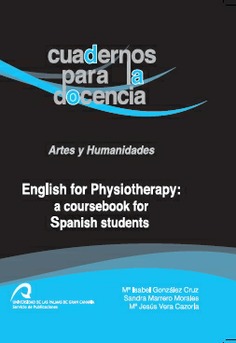
English for Physiotherapy: a coursebook for Spanish students
Mª Isabel González Cruz (Escritora) , Sandra Marrero Morales (Escritora) , María Jesús Vera Cazorla (Escritora)
Gran parte de la formación del futuro profesional de la Fisioterapia reside en la actualización de conocimientos especializados mediante la lectura de los últimos trabajos publicados sobre la materia. Generalmente, muchos de estos trabajos están publicados en inglés, de ahí la necesidad de tener un dominio de la lengua adaptado tanto en sus contenidos léxicos como en su gramática a esta especialidad. Este cuaderno tiene como objetivo fundamental familiarizar a los futuros profesionales de la Fisioterapia con textos escritos en inglés relacionados con las diferentes especialidades que se incluyen en su ámbito profesional, así como dar unas pautas sencillas para que, a su vez, estos puedan difundir sus opiniones y sus propios trabajos de investigación en lengua inglesa. Cada unidad consta de dos partes: en la primera, se trabaja la comprensión lectora y el vocabulario a través de un artículo relacionado con una especialidad concreta; en la segunda parte, de la forma más sencilla posible, se le ofrecen al estudiante algunas de las herramientas gramaticales y discursivas más convenientes para escribir un texto científico. Finalmente, se incluye un glosario de términos relacionados con las diferentes especialidades de la Fisioterapia y una bibliografía donde se especifican las fuentes utilizadas, así como diversas gramáticas y diccionarios de utilidad para el alumno.
The majority of the training that is part of the professional future of physical therapy relies on the updating of the specialized knowledge through the readings of the last works published about this subject. Generally, many of these works are published in English that is why it is necessary to master the language, adapted to the lexical and grammatical content of this field.This book aims to make future professionals of physical therapy get acquainted with texts written in English and related to the different areas included in their professional field, as well as it provides easy guidelines so that students can disseminate their opinions and their own investigations in English. Each unit is divided in two parts: in the first one, students will improve their reading comprehension skills and learn vocabulary through the reading of an article related to a specific field; in the second one, some grammatical and discursive tools are offered, in the easiest way, to students so that they learn how to write a scientific text. Finally, a glossary of terms related to the different fields of physical therapy is included, as well as a bibliography including the references used and some grammar books and useful dictionaries.
- Escritora
- Mª Isabel González Cruz
- Escritora
- Sandra Marrero Morales
- Escritora
- María Jesús Vera Cazorla
- Colección
- CUADERNOS PARA LA DOCENCIA: ARTES Y HUMANIDADES.
- Materia
- Educación Superior / Universidad, ELT: inglés para fines técnicos y científicos
- Idioma
- English
- EAN
- 9788490422007
- ISBN
- 978-84-9042-200-7
- Depósito legal
- GC 532-2015
- Páginas
- 160
- Ancho
- 1,7 cm
- Alto
- 2,4 cm
- Edición
- 1
- Fecha publicación
- 15-09-2015
- Número en la colección
- 5
Contenidos
PRESENTACIÓN CUADERNOS PARA LA DOCENCI
INTRODUCTION
UNIT 1. PHYSIOTHERAPY: INTRODUCTION TO PHYSICAL THERAPY OR PHYSIOTHERAPY
1. Warming up!
2. Introduction to Physical therapy or Physiotherapy 2.1. Reading comprehension: Introduction to physical therapy or physiotherapy
2.2. Word definition
2.3. Increasing your vocabulary
2.4. Completing sentences
2.5. Synonyms 3. Physiotherapy specialty areas
3.1. Translation
3.2. Vocabulary
3.3. Physiotherapy specialty areas: Types of physical therapy
3.3.1. Increasing your vocabulary
3.3.2. Grammar
3.3.3. Reading comprehension skills. True or false?
4. Curricula for the physical therapist professional degree
4.1. Filling gaps
4.2. Crossword. Review of physiotherapy specialty areas
5. One step into grammar! Articles
5.1. Supply a/an, the where suitable
UNIT 2. CARDIOVASCULAR AND PULMONARY PHYSIOTHERAPY
1. Warming up!
2. Introduction to Cardiovascular & Pulmonary physiotherapy
2.1. Reading comprehension: Introduction to cardiovascular & physiotherapy
2.2. Word definition
2.3. Increasing your vocabulary
2.4. Definitions
2.5. Vocabulary
3. Physiotherapy management in the prevention of complications
3.1. Translation
3.2. Synonyms
3.3. Reading comprehension
4. Filling gaps. Respiratory practitioners & physical therapists
5. Multiple choice. Assessing air quality as part of a physical therapy plan of care
6. One step into grammar! Relative clauses
6.1. Filling gaps
UNIT 3. GERIATRIC PHYSIOTHERAPY
1. Warming up!
2. Vocabulary and reading comprehension: Geriatric physiotherapy
2.1. Filling gaps
2.2. Vocabulary
3. Matching exercise
4. Filling gaps
5. Completing sentences
UNIT 4. NEUROLOGICAL PHYSIOTHERAPY
1. Warming up!
2. Reading Comprehension: Neurological physiotherapy
2.1. Comprehension questions
2.2. Vocabulary
2.3. Filling gaps
2.4. Filling gaps
2.5. Reading comprehension
2.6. Reading comprehension questions
2.7. Linking treatments and effects
2.8. Vocabulary and translation
UNIT 5. PEDIATRIC PHYSIOTHERAPY
1. Warming up!
2. Introduction to Pediatric physiotherapy
2.1. Reading comprehension: Introduction to pediatric physiotherapy
2.2. Word definition
2.3. Increasing your vocabulary
2.4. Completing sentences
2.5. Antonyms
3. The pediatric physical therapy practitioner
3.1. Translation
3.2. Looking up words in the dictionary
3.3. Filling gaps. Requirements to become a pediatric therapy practitioner
4. Some disorders and diseases treated by pediatric physical therapists
4.1. Increasing your vocabulary
4.2. Looking up words in the dictionary
4.3. Give the references of the following pronouns in the text
4.4. Reading comprehension questions
5. Multiple choice. Pediatric rehabilitation & recovery of children with traumatic injuries
6. One step into grammar! Modal verbs
6.1. Filling gaps
UNIT 6. ORTHOPEDIC PHYSIOTHERAPY
1. Orthopedic specialty area
1.1. Reading comprehension: Orthopedic specialty area
2. One step into grammar! Combining nouns
2.1. Translation
2.2. Grammar exercise
2.3. Grammar exercise
3. Reading and translation
4. The chartered society of physiotherapy
4.1. Let's read about how to avoid health risks
4.2. Filling the gaps
4.3. Writing
4.4. Vocabulary
5. Crossword. Bones in the human body
UNIT 7. WOMENS HEALTH PHYSIOTHERAPY
1. Warming up!
1.1. Vocabulary
1.2. Reading Comprehension: The role of physiotherapy in pre and
post natal care
1.2.1. Pre-reading questions
1.2.2. Comprehension questions
2. Translation
3. Matching sentences
4. Filling blanks with verbs
5. Filling blanks with nouns
UNIT 8. SPORTS PHYSIOTHERAPY
1. Warming up!
2. Sports-specific warm up advice
2.1. Explaining the meaning
2.2. Matching the words with their definitions
2.3. Writing your opinion
3. The great outdoors: how a green exercise environment can benefit all
3.1. Reading comprehension: The great outdoors
3.1.1. Reading and summarizing
3.1.2. Grammar
4. One step into grammar! The passive voice
4.1. Passive voice exercise
4.2. Writing passive sentences
4.3. Transforming active sentences into passive
5. One step into grammar! Passive voice in reporting experiments
5.1. Supplying the passive sentences
6. Declining physical activity levels
6.1. Translating
6.2. Synonyms
6.3. Checking your understanding
6.4. Increasing your vocabulary
7. Green exercise and health
7.1. Summarising the main ideas of this text
7.2. Stating your opinion
8. Express your opinion!
UNIT 9. CLINICAL ELECTROPHYSIOLOGIC PHYSIOTHERAPY
1. Warming up!
2. What Is electrotherapy?
2.1. Increasing your vocabulary
2.2. Reading comprehension
2.3. Explaining in your own words
3. Electrotherapy devices. Definitions
3.1. Asking questions about these electrotherapy devices
4. One step into grammar! Passive constructions with reporting verbs
4.1. Writing the passive forms
4.2. Writing passive voice sentences
4.3. Writing sentences using the passive voice with reporting verbs
5. Reading Comprehension: Electrotherapy
5.1. True or false
BIBLIOGRAPHY
A SHORT GLOSSARY OF TERMS RELATED TO PHYSIOTHERAPY
Libros relacionados
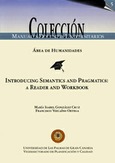
Introducing semantics and pragmatics : a reader and workbook
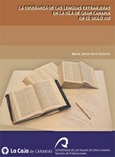
La enseñanza de las lenguas extranjeras en la Isla de Gran Canaria en el Siglo XIX
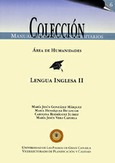
Lengua inglesa II
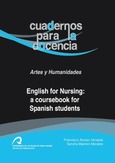
English for Nursing: a coursebook for Spanish students
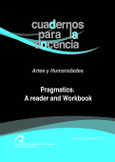
Pragmatics. A Reader and Workbook
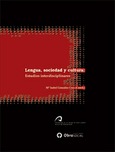
Lengua, Sociedad y Cultura. Estudios interdisciplinares
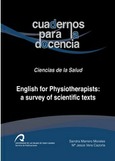
English for Physiotherapists: a survey of scientific texts

